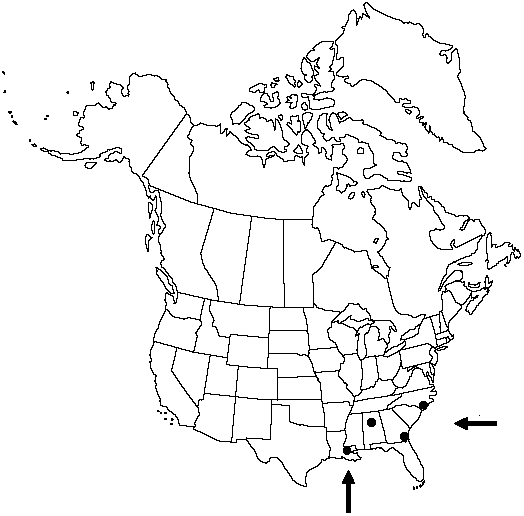Difference between revisions of "Selaginella braunii"
Gard. Chron. 1120. 1867.
FNA>Volume Importer |
imported>Volume Importer |
||
| (5 intermediate revisions by 2 users not shown) | |||
| Line 8: | Line 8: | ||
}} | }} | ||
|common_names=Braun's spike-moss | |common_names=Braun's spike-moss | ||
| + | |special_status={{Treatment/ID/Special_status | ||
| + | |code=I | ||
| + | |label=Introduced | ||
| + | }} | ||
|basionyms= | |basionyms= | ||
|synonyms= | |synonyms= | ||
| Line 23: | Line 27: | ||
|elevation=0–50 m | |elevation=0–50 m | ||
|distribution=Ala.;Ga.;La.;N.C.;native of China. | |distribution=Ala.;Ga.;La.;N.C.;native of China. | ||
| + | |introduced=true | ||
|discussion=<p><i>Selaginella braunii</i> is cultivated in greenhouses, nurseries, and gardens mainly in Florida, Georgia, Louisiana, and Texas. It is related to <i>S. ostenfeldii</i> Hieronymus of Thailand, Burma, and Indochina, and to S. mairei H. Leveillé, also from Burma and from Indochina.</p> | |discussion=<p><i>Selaginella braunii</i> is cultivated in greenhouses, nurseries, and gardens mainly in Florida, Georgia, Louisiana, and Texas. It is related to <i>S. ostenfeldii</i> Hieronymus of Thailand, Burma, and Indochina, and to S. mairei H. Leveillé, also from Burma and from Indochina.</p> | ||
|tables= | |tables= | ||
| Line 32: | Line 37: | ||
-->{{#Taxon: | -->{{#Taxon: | ||
name=Selaginella braunii | name=Selaginella braunii | ||
| − | |||
|authority=Baker | |authority=Baker | ||
|rank=species | |rank=species | ||
| Line 46: | Line 50: | ||
|publication title=Gard. Chron. | |publication title=Gard. Chron. | ||
|publication year=1867 | |publication year=1867 | ||
| − | |special status= | + | |special status=Introduced |
| − | |source xml=https:// | + | |source xml=https://bitbucket.org/aafc-mbb/fna-data-curation/src/2e0870ddd59836b60bcf96646a41e87ea5a5943a/coarse_grained_fna_xml/V2/V2_213.xml |
|genus=Selaginella | |genus=Selaginella | ||
|subgenus=Selaginella subg. Stachygynandrum | |subgenus=Selaginella subg. Stachygynandrum | ||
Latest revision as of 21:22, 5 November 2020
Plants terrestrial, tree-shaped. Stems erect, highly branched, branches 4-forked, flat, not articulate, hispid. Rhizophores not seen. Leaves rugose. Lateral leaves distant, green, ovate-oblong, 2–2.5 × 0.7–1 mm; base truncate, basiscopically forming very short wing; margins green to slightly transparent, usually revolute, crenate; apex obtuse to rounded. Median leaves lanceolate-oblong to asymmetric, 2–3 × 1 mm; base peltate, rounded; margins green to slightly transparent, usually revolute, crenate; apex long-acuminate. Strobili solitary, 2–8 mm; sporophylls monomorphic, cordate to deltate-ovate, base glabrous, margins green, slightly crenate, apex cuspidate to acuminate. 2n = 20.
Habitat: Habitat unknown
Elevation: 0–50 m
Distribution

Introduced; Ala., Ga., La., N.C., native of China.
Discussion
Selaginella braunii is cultivated in greenhouses, nurseries, and gardens mainly in Florida, Georgia, Louisiana, and Texas. It is related to S. ostenfeldii Hieronymus of Thailand, Burma, and Indochina, and to S. mairei H. Leveillé, also from Burma and from Indochina.
Selected References
None.